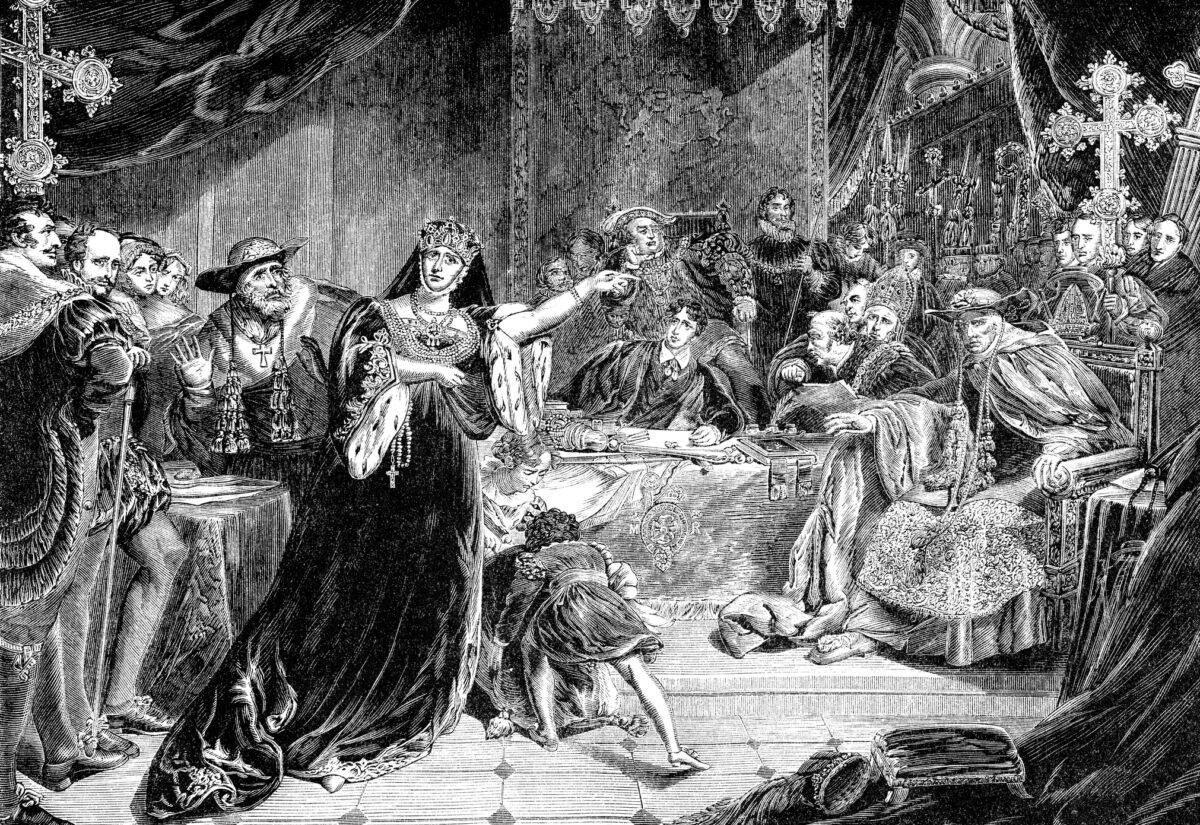 Getty Images/iStockphoto
Getty Images/iStockphotoWhen we think of Tudor England, we often imagine Henry VIII’s six wives, Elizabeth I’s steely rule, and the rise and fall of courtiers in a volatile court. But beneath the palace drama and political upheaval were the laws—some of them astonishingly specific, especially when it came to personal appearance. During the 16th century, your clothes, hairstyle, and even the fabrics you wore were matters of state concern. Appearance wasn’t just about vanity or social pressure—it was political. Here are some of the strangest Tudor laws that attempted to control how people looked, dressed, and presented themselves in public.
Sumptuary laws: dress by decree
The Tudor period was defined by strict sumptuary laws—rules designed to regulate what people could wear based on their social rank. These laws were less about fashion and more about maintaining the rigid social hierarchy. The idea was that you should look like your station in life, and nothing more. Your outfit had to send a very clear message about who you were.
For example, only members of the royal family were permitted to wear purple silk, the colour traditionally associated with royalty. Knights and above could wear velvet, but not just any velvet—certain colours and types were strictly off-limits unless you were of noble blood. Cloth of gold and silver was similarly restricted. A merchant or commoner found wearing such fabrics could face stiff penalties. The laws were enforced with fines, confiscation of clothing, and in some cases, imprisonment. The policing of fashion was quite literally a state concern.
Fur was only for the elite
In Tudor England, fur was not just about keeping warm—it was a clear symbol of wealth and power. Laws dictated exactly who could wear what type of fur. Only earls and above were allowed to wear sables. Lesser nobles might manage to wear fox or beaver, but only if they had the appropriate titles or income levels to justify it.
These rules weren’t about practicality—they were about visibility. Wearing the wrong fur could lead to serious consequences, not because of a fashion faux pas, but because it was considered a form of social rebellion. It sent a message that you were trying to elevate your status. This emphasis on visual status markers reinforced the Tudor obsession with class and control, especially as the rising merchant class began to accumulate wealth and mimic noble styles.
Laws on hats and head coverings
By law, all males over the age of six (excluding nobility) were required to wear woollen caps on Sundays and holidays. This wasn’t about modesty or uniformity. It was a deliberate effort to support the English wool trade. Parliament passed the Cappers Act in 1571, mandating that these caps be made in England and worn in public under penalty of fine.
It’s a rare example of economic policy being stitched directly into fashion law. The aim was to boost domestic wool production and reduce reliance on foreign imports. Though seemingly minor, this law shows the Tudors’ willingness to enforce appearance regulations not just for class control, but also for economic strategy. It also created a kind of enforced visual uniformity for lower-status men, while the wealthier classes stood out in their feathered caps and elaborate headwear.
Colours carried consequences
Specific colours were also legislated. Purple, crimson, and gold were for royalty and the highest nobility. These colours were not just fashionable, they were expensive to produce and deeply symbolic. Dyes were made from rare or labour-intensive ingredients, and owning them was seen as a sign of privilege.
Yeomen and craftsmen were expected to wear duller, cheaper dyes—browns, greys, and muted greens. Brightly dyed clothing, especially reds and blues, was reserved for those with money and status. Wearing unauthorised colours was not just a breach of etiquette; it was a legal offence. It blurred the lines between classes and threatened the Tudor concept of an ordered society, where everyone knew their place, and dressed accordingly. The colour of your tunic was as important as your title.
Clothing as punishment
Clothing wasn’t just regulated—it could also be used as a form of punishment. People who were found guilty of certain crimes, including gossiping, slander, or public drunkenness, could be made to wear shameful or humiliating garments in public. These weren’t codified laws so much as local customs, but they were no less effective. These punishments served the same purpose as the stocks: public embarrassment and social correction.
In some areas, offenders were made to wear women’s clothing, jester’s outfits, or had signs pinned to their garments declaring their crime. Others had to wear clothing inside out or backwards. The goal was to use dress as a form of discipline, reinforcing both gender norms and the idea that personal behaviour and appearance reflected your morality. The message was simple: if you stepped out of line, you’d be made to look ridiculous.
Beards and taxation
In the later years of Henry VIII’s reign and into Elizabeth I’s, men’s facial hair became more than just a fashion choice. There were periods when beards were taxed—men had to pay for the right to grow and keep them. The amount varied depending on social status, creating another visible marker of wealth.
Beards were a cultural flashpoint. They were associated with wisdom, masculinity, and authority, but also with rebellion and nonconformity. Some argue the tax was introduced to curb the growing trend among lower classes, while others suggest it was simply a way for the crown to raise funds. Either way, it’s another example of how the Tudors saw appearance not as personal expression, but as something that had to be monitored and monetised.
Women’s dress and modesty laws
Women’s clothing was also tightly controlled. There were specific laws forbidding women of lower birth from wearing luxurious fabrics or elaborate decorations. Lace, fine linen, embroidery, and richly dyed silks were strictly for noblewomen. Even accessories like veils, ruffs, and ornate jewellery were reserved for the elite.
Women who broke these laws could be fined or shamed, especially if they were seen as “dressing above their station.” This wasn’t just about class; it was about control. Clothing had to reflect modesty, virtue, and obedience, particularly for unmarried women. These laws reinforced a patriarchal expectation that women should be demure, visible only in accordance with their father or husband’s status. Dressing well wasn’t just expensive—it was political.
Restrictions on theatrical costumes
Even the world of theatre wasn’t exempt. Actors often wore lavish costumes to portray kings, nobles, or foreign dignitaries, borrowing or acquiring real aristocratic garments. This led to concerns that they were flouting sumptuary laws or misleading the public into thinking they were of higher status than they were.
In response, theatres had to apply for special permissions to allow their actors to wear clothing that would normally be reserved for the aristocracy. This restriction was less about performance and more about protecting the idea that visual status should reflect actual status. It shows how even make-believe had its boundaries in Tudor society. The lines between acting and impersonation were thin, and the law was watching.
Children’s clothing and class identity
Even children weren’t free from these rules. While wealthier families dressed their children in scaled-down versions of adult finery, poorer children were expected to wear plain, practical garments that reflected their family’s social rank. There was no such thing as “children’s fashion” in the modern sense. What you wore was part of your family’s reputation.
Some towns enforced dress standards in schools or religious settings to make sure children weren’t appearing above their station. In some cases, charity children were required to wear badges or standard uniforms, marking them out as recipients of public or church support. The appearance of even the youngest subjects was managed to reinforce the Tudor hierarchy.
The Tudors were famously obsessed with control, and nothing demonstrated that more clearly than their laws on personal appearance. Clothing wasn’t just fashion; it was politics, class, economy, and morality all stitched into one. In a world where what you wore said everything about who you were, breaking the rules of dress could be seen as a threat to the entire social order. The fabric on your back wasn’t just fabric—it was a statement of power, position, and obedience.



